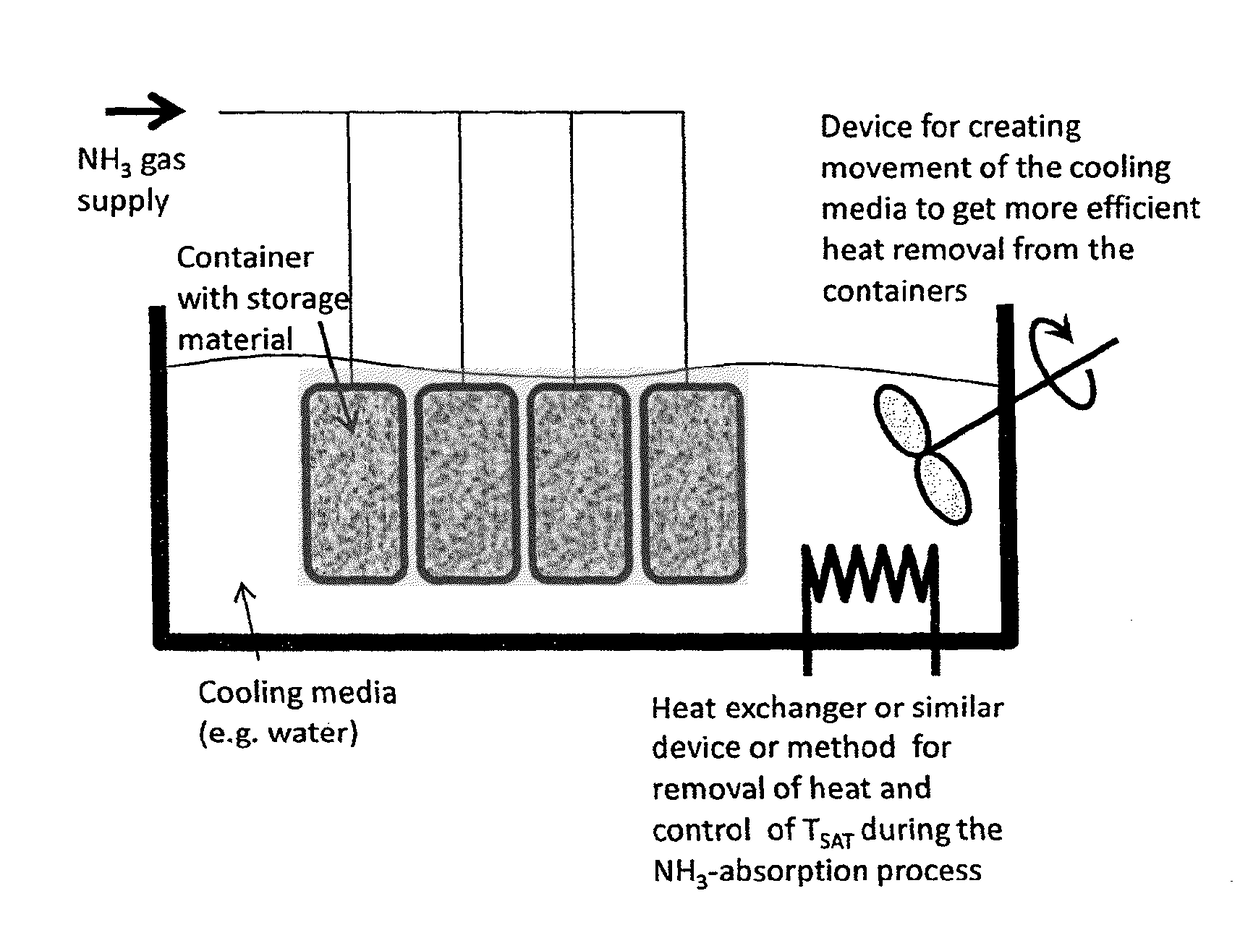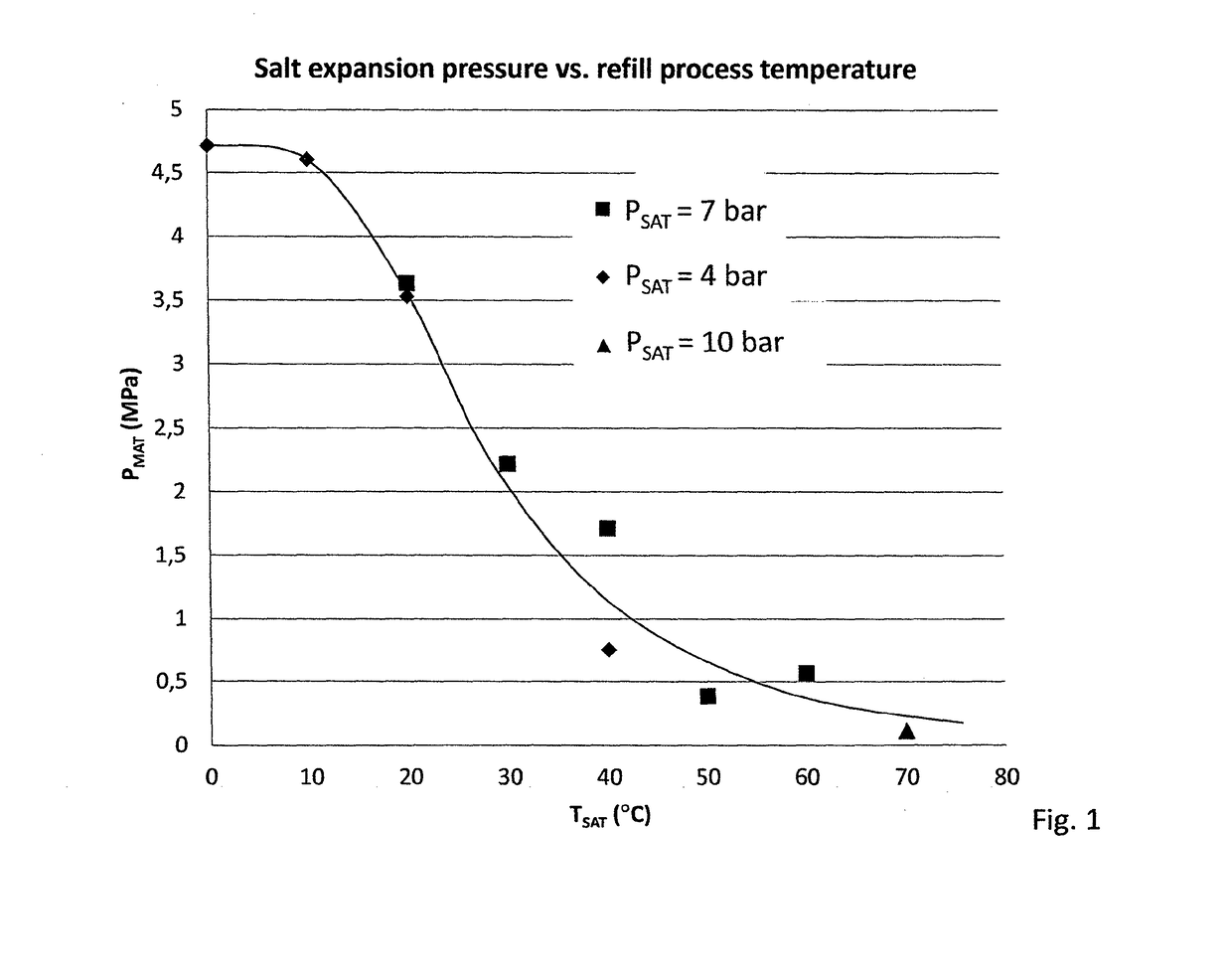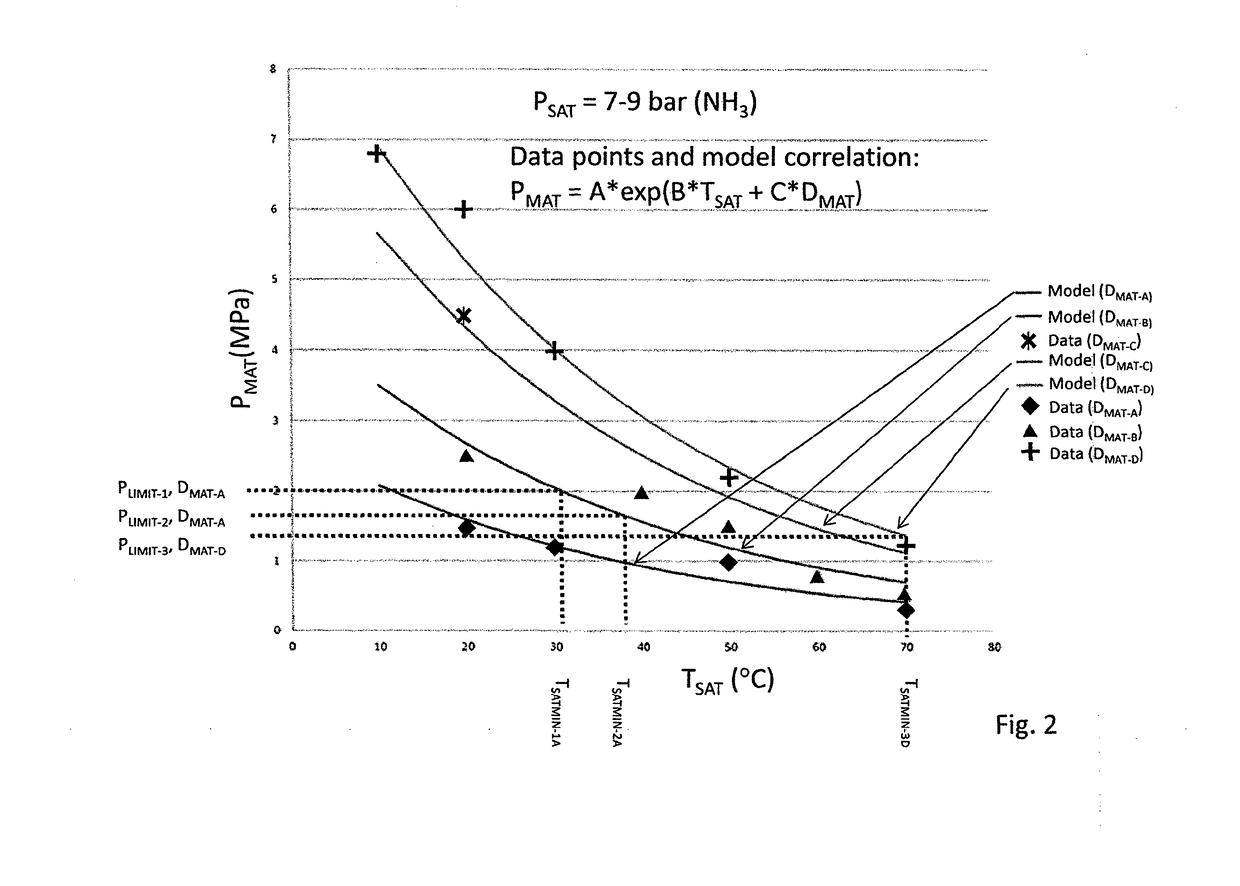Method for reducing forces (hot fill/re-fill)
- Summary
- Abstract
- Description
- Claims
- Application Information
AI Technical Summary
Benefits of technology
Problems solved by technology
Method used
Image
Examples
example 2
Metal Wall Thickness Based on a Fixed Saturation, Temperature, and Storage-Material Density
[0086]A refill process has been established to refill cartridges at a temperature of 20° C. The ammonia storage material density given is 1175 g / cm3, which gives a material pressure PMAT=3.2 MPa. The cartridge is cylindrical, with an outer diameter of 178 mm due to requirements of available space on certain vehicles on the market. It is decided to make the cartridge from a deep-drawn aluminum-alloy casing. After deep-drawing, the aluminum alloy has a yield strength of 170 MPa; the “yield strength”, or “yield point” is defined to be the stress at which a material begins to deform plastically. Prior to the yield point the material will deform elastically and will return to its original shape when the applied stress is removed. Once the yield point is passed, some fraction of the deformation will be permanent and non-reversible.
[0087]The minimum shell thickness of the cylinder can now be determin...
example 3
[0088]Given a certain design pressure and design temperature, the allowable stress (from vessel material) and required vessel radius (from volume), a common approach is the design by a rule method, following design rules such as the ASME Boiler and Pressure Vessel Code; ASME Section VIII Division 1.
[0089]The ASME design code gives for a thin walled design R / t>=10 (R=vessel radius, t=wall thickness) the following design formulas for cylindrical shell minimum wall thickness requirement.
[0090]Considering circumferential stress:
t=P*RoS*E+0.4*P
[0091]Considering longitudinal stress:
t=P*Ro2*S*E+1.4*P
t=Wall thickness (in.)
P=Design pressure (psi)
Ro=Outside radius (in.)
S=Allowable stress (psi)
E=Weld joint efficiency factor
[0092]Similarly the allowable pressure can be calculated using the ASME code and design by rule method. Given a design temperature, allowable stress (from vessel material), vessel radius (from volume) and wall thickness, the following formulas provide the maximum allowable p...
PUM
| Property | Measurement | Unit |
|---|---|---|
| Temperature | aaaaa | aaaaa |
| Temperature | aaaaa | aaaaa |
| Fraction | aaaaa | aaaaa |
Abstract
Description
Claims
Application Information
 Login to View More
Login to View More - R&D
- Intellectual Property
- Life Sciences
- Materials
- Tech Scout
- Unparalleled Data Quality
- Higher Quality Content
- 60% Fewer Hallucinations
Browse by: Latest US Patents, China's latest patents, Technical Efficacy Thesaurus, Application Domain, Technology Topic, Popular Technical Reports.
© 2025 PatSnap. All rights reserved.Legal|Privacy policy|Modern Slavery Act Transparency Statement|Sitemap|About US| Contact US: help@patsnap.com



